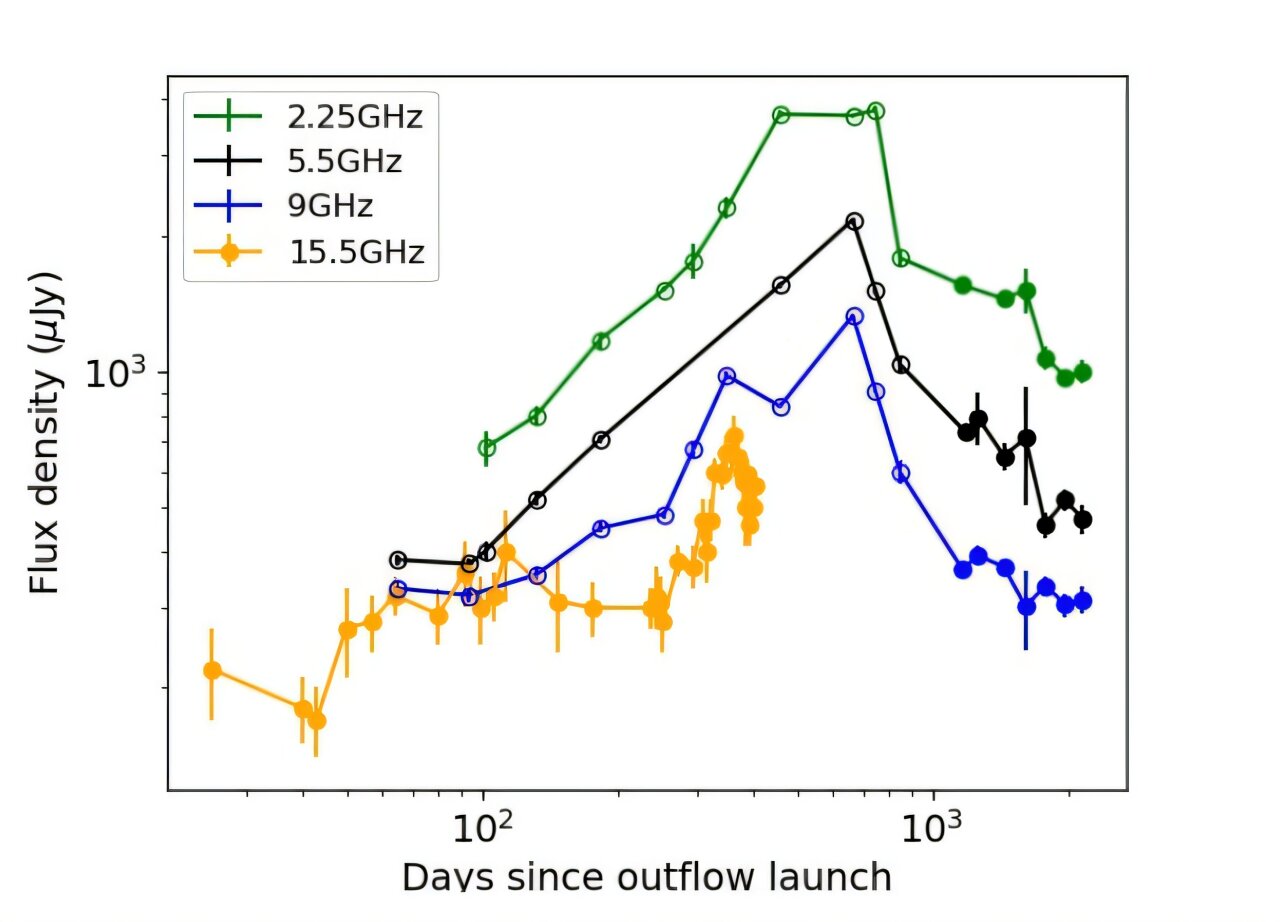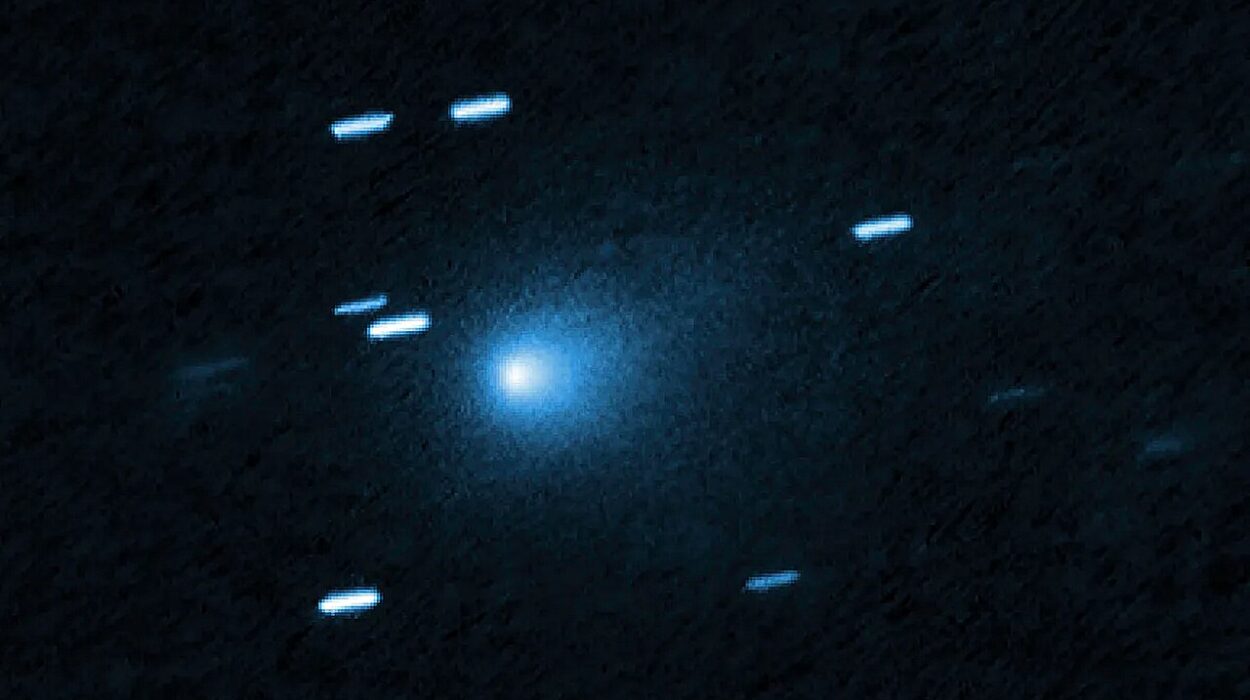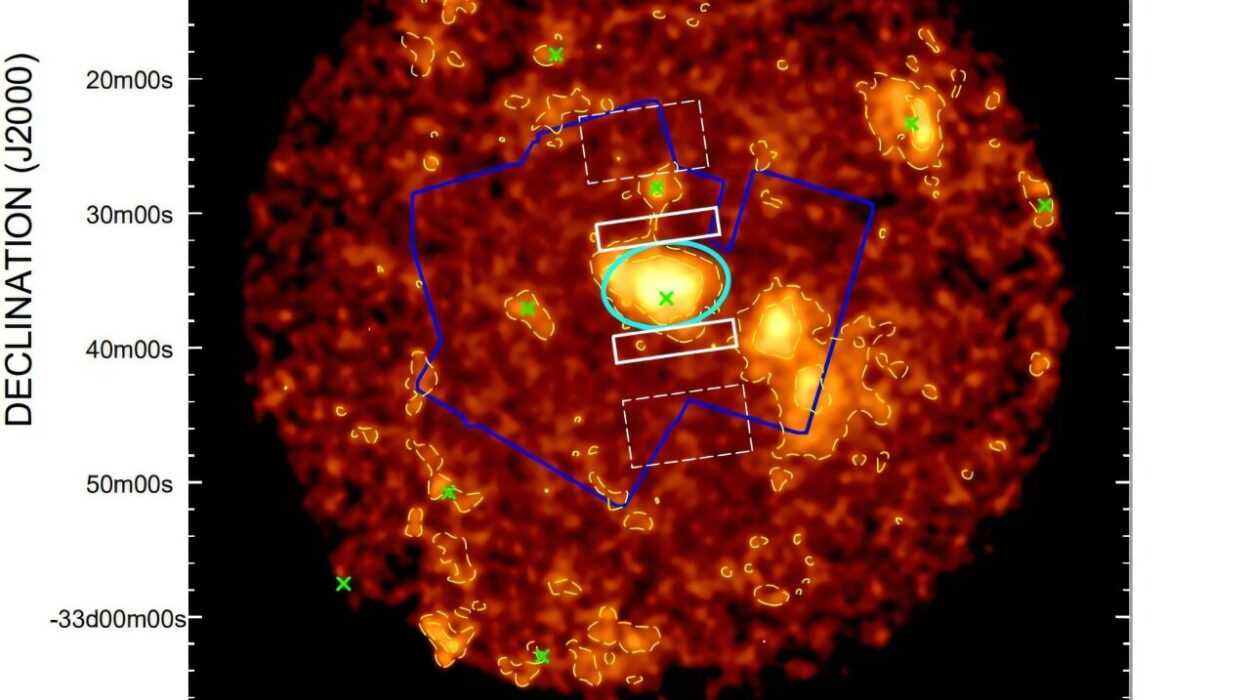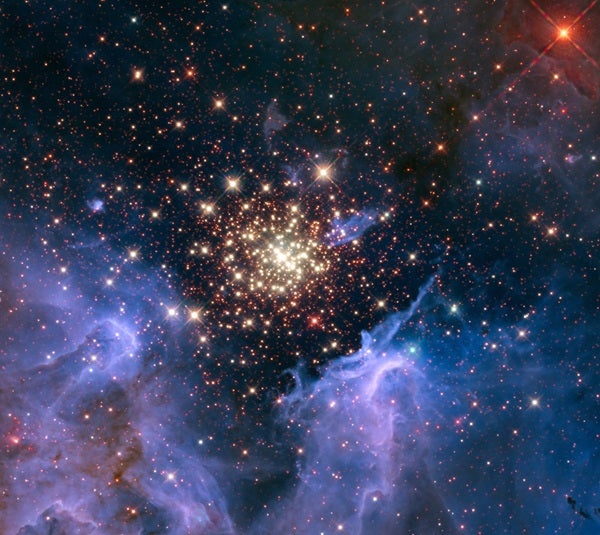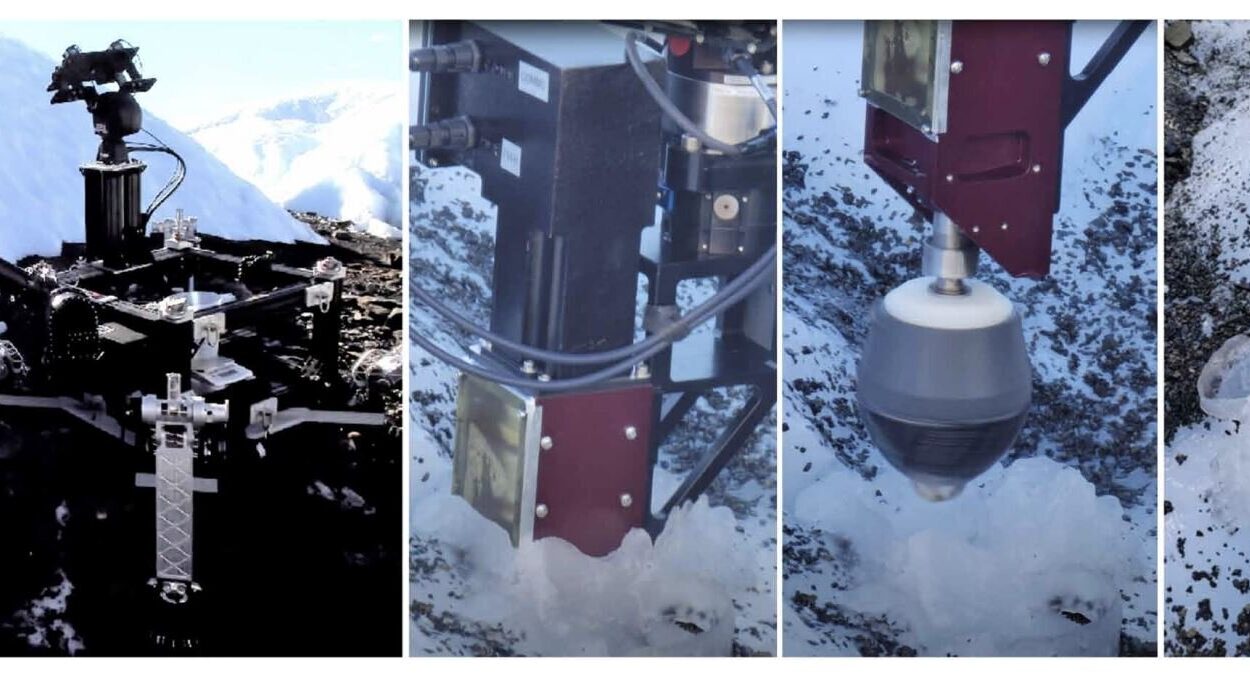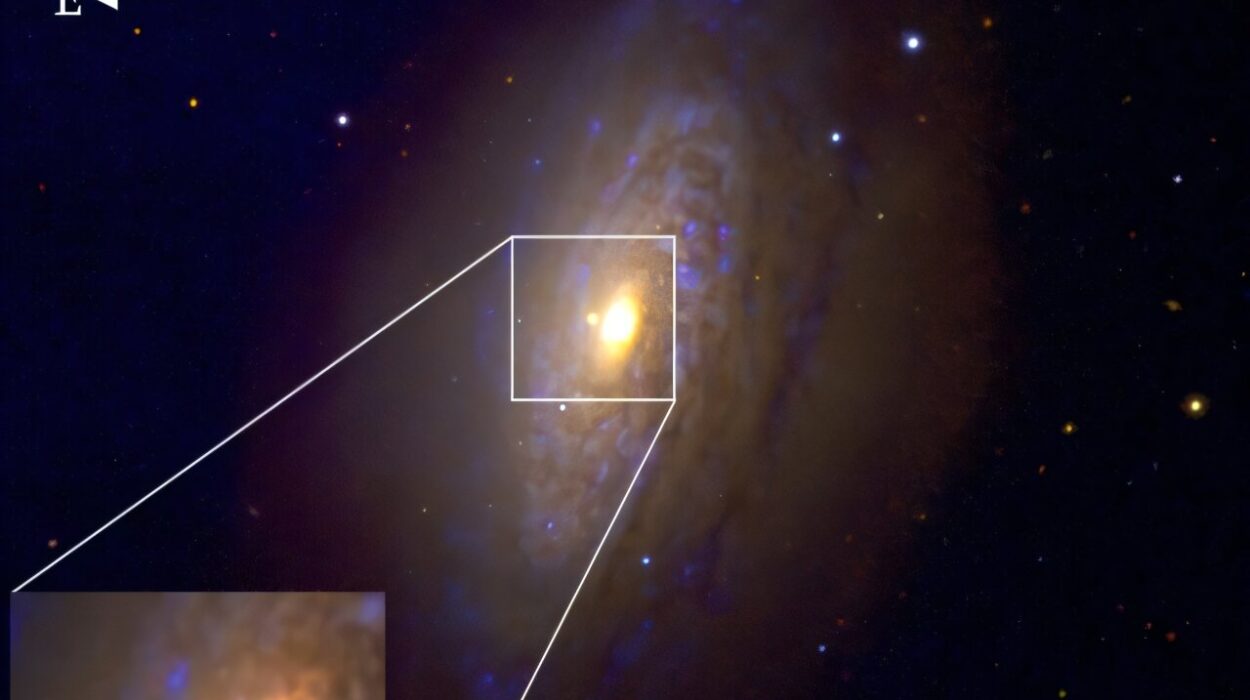The universe is full of beauty, but also of danger. Among the most dramatic fates that can befall a star is to stray too close to a supermassive black hole. These cosmic giants—millions or even billions of times the mass of the Sun—reside at the centers of most galaxies, including our own Milky Way. Their gravity is so immense that not even light can escape if it ventures too close.
When an unsuspecting star drifts into the black hole’s neighborhood, it meets a violent end in what astronomers call a tidal disruption event, or TDE. The black hole’s tidal forces stretch and tear the star apart, shredding it into streams of stellar debris. About half of this material is flung out into space, while the other half spirals inward, feeding the black hole and releasing a flare of radiation so luminous it can briefly outshine the host galaxy.
TDEs are rare and precious for astronomers. They offer a fleeting glimpse into the hidden lives of black holes, revealing how they interact with their surroundings and grow over cosmic time. And one such event—known as AT2019azh—has become an especially fascinating case study.
The Discovery of AT2019azh
In 2019, telescopes detected a brilliant flare in the galaxy KUG 0180+227, about 300 million light-years from Earth. At first, astronomers had to rule out other possibilities—could it be a supernova, the explosive death of a massive star? Or perhaps a sudden flare from an active galactic nucleus, the bright core of a galaxy with a voracious black hole?
Careful observations revealed that this was something different. The flare displayed the persistent blue colors and high temperatures characteristic of tidal disruption events. It also lacked the chemical signatures one would expect from a supernova. Astronomers confirmed that AT2019azh was indeed a TDE, the death cry of a star consumed by a supermassive black hole.
Listening to the Echo: Radio Waves from a Shredded Star
Optical telescopes captured the initial flare, but the story of AT2019azh did not end there. Much like ripples spreading across a pond, the disruption left behind afterglows that astronomers could track in different wavelengths of light. Among the most revealing of these afterglows are radio waves.
Radio emission arises when the stellar debris, expelled at tremendous speeds, slams into the gas and dust surrounding the black hole. This interaction produces shockwaves that accelerate particles, causing them to radiate at radio frequencies. By monitoring these signals, scientists can probe both the material ejected in the event and the environment around the black hole—a region usually cloaked in mystery.
A team led by Matthew Burn of Curtin University in Australia set out to do just that. Using the Very Large Array (VLA), one of the most powerful radio observatories on Earth, they conducted long-term monitoring of AT2019azh from April 2022 to July 2024. Their goal was to understand how the event evolved years after the initial disruption.
A Slow Fade, with Subtle Surprises
What they found paints a vivid picture of the lingering echoes of a cosmic catastrophe. The radio emission from AT2019azh, which had peaked around 650 days after the star was torn apart, has continued to decline. Unlike some other TDEs, which show surprising late-time brightening years after the disruption, AT2019azh displayed no such resurgence even up to six years later.
Yet the fading was not simple or uniform. Initially, the radio light dimmed rapidly, but after about 1,000 days, the decline began to flatten, particularly at 9.0 GHz. Similar flattening trends also appeared at 5.5 GHz and 2.25 GHz in the latest data, more than 1,700 days after the event. These subtle changes suggest the afterglow is evolving in ways that reflect both the energy of the outflow and the nature of the environment surrounding the black hole.
By modeling the light curves, the team concluded that AT2019azh is surrounded by a remarkably flat circumnuclear medium—the gas and dust in the black hole’s immediate neighborhood. Compared to other TDEs, this environment is unusually uniform, which may explain the smooth and predictable evolution of its radio afterglow.
A Single Burst, Echoing for Decades
Perhaps the most intriguing conclusion from the study is that the outflow from AT2019azh likely came from a single burst of material ejected around the time of the disruption itself. In other words, when the star was shredded, it expelled a powerful outflow that has been steadily interacting with its surroundings ever since. There is no evidence of later ejections or complex, delayed outflows.
This means that the radio glow of AT2019azh is expected to persist for decades, slowly fading but still detectable by sensitive instruments. For astronomers, this is a golden opportunity. Long-term monitoring of such a stable, long-lived afterglow can provide unprecedented insights into the physics of black hole outflows and the structure of galactic nuclei.
Why AT2019azh Matters
The story of AT2019azh is not just about one star’s tragic demise. It is about unlocking the secrets of the most extreme objects in the universe. Black holes themselves are invisible, but tidal disruption events act like cosmic beacons, briefly illuminating their hidden domains.
By studying AT2019azh, astronomers learn not only about the dynamics of shredded stars but also about how black holes interact with and shape their host galaxies. The density profile of the circumnuclear medium, the behavior of the ejected debris, and the long-lasting radio afterglow all add vital pieces to the puzzle.
And there is something profoundly human in the endeavor. When astronomers tune their instruments to catch the fading whispers of AT2019azh, they are, in a sense, listening to the echo of a star’s death. They are tracing energy released hundreds of millions of years ago, energy that has crossed an unfathomable gulf of space to reach our detectors.
The Cosmic Perspective
Events like AT2019azh remind us of the fragile balance of the cosmos. Stars, which we often see as eternal beacons of stability, can be undone in an instant by the inexorable pull of a black hole. Yet in their destruction, they gift us knowledge. Their death cries become signals we can interpret, messages that tell us about the unseen forces shaping galaxies.
For the team at Curtin University and their collaborators, AT2019azh is not just a data point. It is a window into the physics of extremes, a rare chance to watch in real time as the universe processes one of its most violent interactions. For the rest of us, it is a story that bridges the cold mathematics of astrophysics with the emotional weight of cosmic mortality.
When you look up at the night sky, consider that hidden behind the stars are invisible titans—black holes—capable of both destruction and revelation. And sometimes, when a star ventures too close, we are lucky enough to witness the aftermath, to catch the glow of its final act.
AT2019azh is one such story: a star undone, a black hole fed, and humanity listening in awe to the whispers of a universe that never stops surprising us.
More information: Matthew Burn et al, The 6 year radio lightcurve of the tidal disruption event AT2019azh, arXiv (2025). DOI: 10.48550/arxiv.2509.17525
